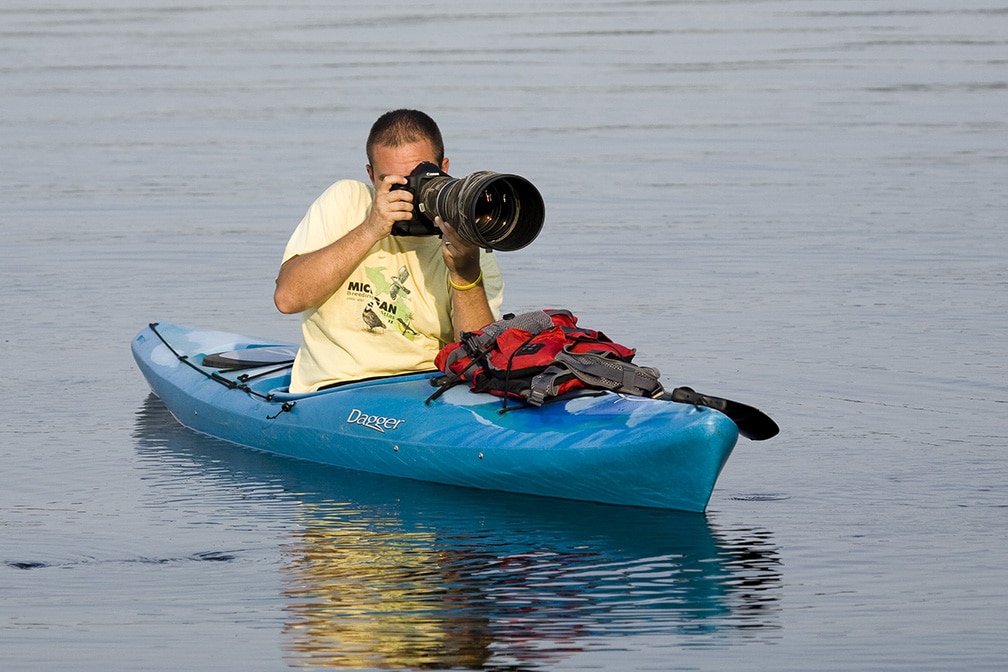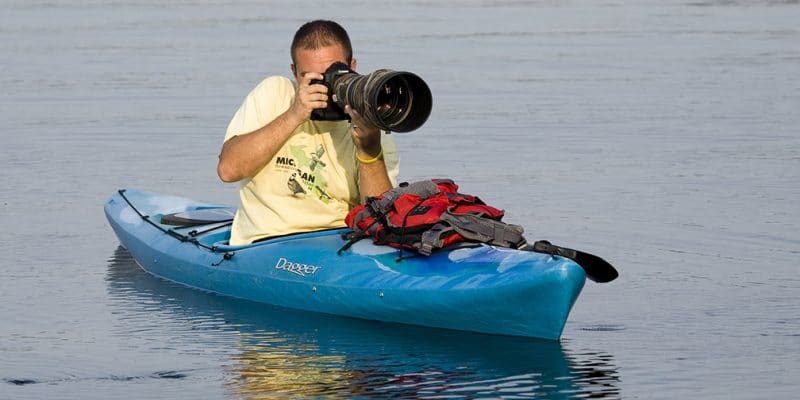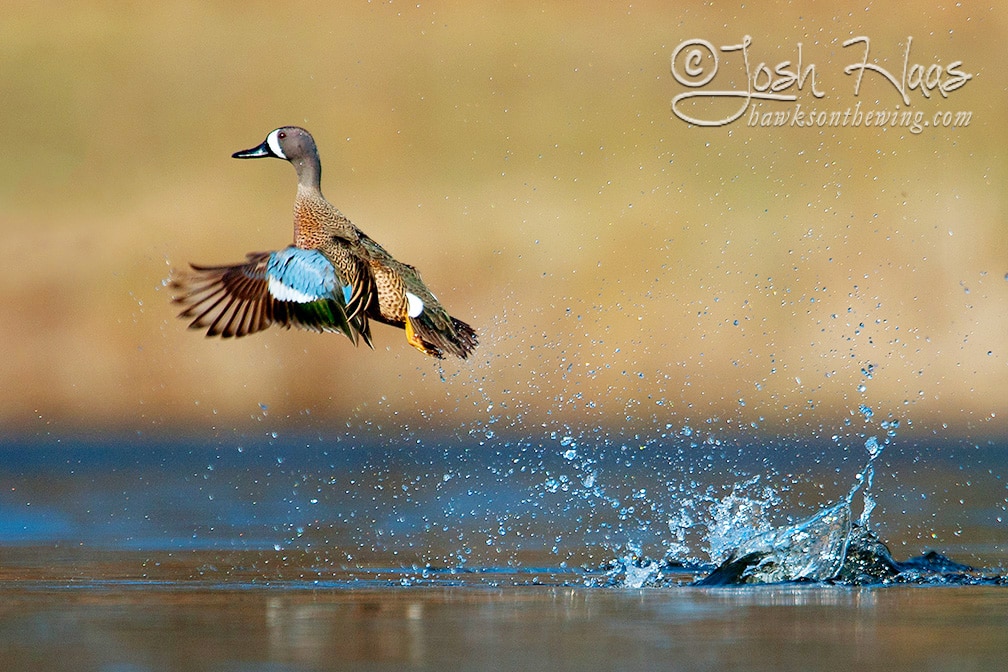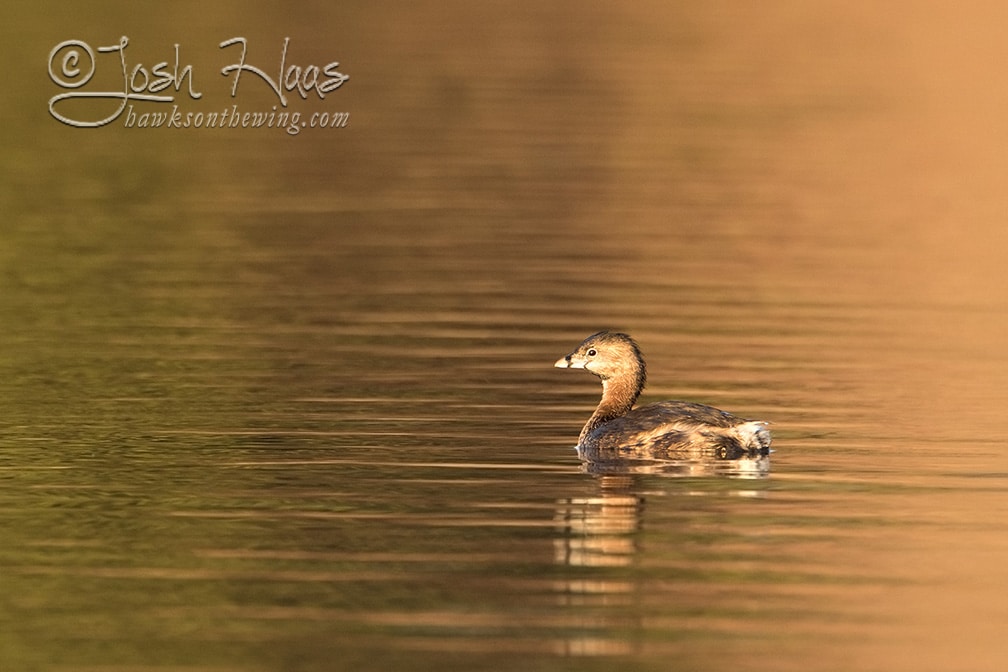
When photographing on the water, stability is everything. Whether shooting with a super telephoto lens or a smaller point and shoot package, there are safe ways of taking on this method. I personally have some rules to live by with this type of shooting and the first is to plan for problems (even though they rarely happen). I always have a large dry-bag with me that I can throw my gear in if the winds pick up or I find myself in a nervous situation. A small towel is also handy to cover gear when paddling. This protects electronics from paddle splash and hot sun damage. I prefer to mostly shoot from flat water and rarely ever take my long lens on a river I’ve never been on. In this situation, I pack a lightweight camera body and a 70-200mm lens which makes for maneuverability and quick shots when necessary.
When shopping for a kayak there are touring models and sit-on-top models, but my preferred platform is a recreational kayak. These kayaks typically have a wider stance in the water and the cockpit is more open for maneuvering gear around. While these boats are slower in the water I find them to be super stable. When photographing, stay low in the seat and keep the camera as low as possible. This not only helps keep your center of gravity lower for stability but when shooting ducks or anything on the water, a low point of view at your subject’s level will enhance your imagery. If you’re new to kayaking, spend time on the water without a camera just paddling and get accustomed to the different feeling of kayaking. Go out on a hot summer day in a swim suit and force your kayak to capsize so you understand the limits of how far you can take the boat before the worst happens. Remember that cameras are most definitely replaceable. One way to get around the fear of all the money invested is to talk with your insurance agent about a policy to cover your camera gear (i.e. personal articles policy). This is an amazing piece of mind when on the water and is surprisingly inexpensive. It’s worth every penny to me (even though I’ve never had a claim involving water).
When actually shooting I will often dress in camouflage and cover the boat in a dark covering as well to be as part of the natural landscape as possible (please ignore the bright colors in the first photo illustrating the technique =). Shooting on the water can be very gratifying but it can also be frustrating. Practice is everything and it’s very important to know the limits of your gear. For those that don’t have long lenses, don’t forget why we started photographing nature; amazing natural connections. Just because our camera gear can’t reach an opportunity doesn’t mean we can’t sit back and simply enjoy them.



